NEIGHBORHOOD VINES
4/25/20
Next up on learning the neighborhood plants: vines.
Native vines
Muscadine Grape (Vitis rotundifolia). These make a wonderful purple fruit, even though it has a thick leathery skin and lots of seeds.
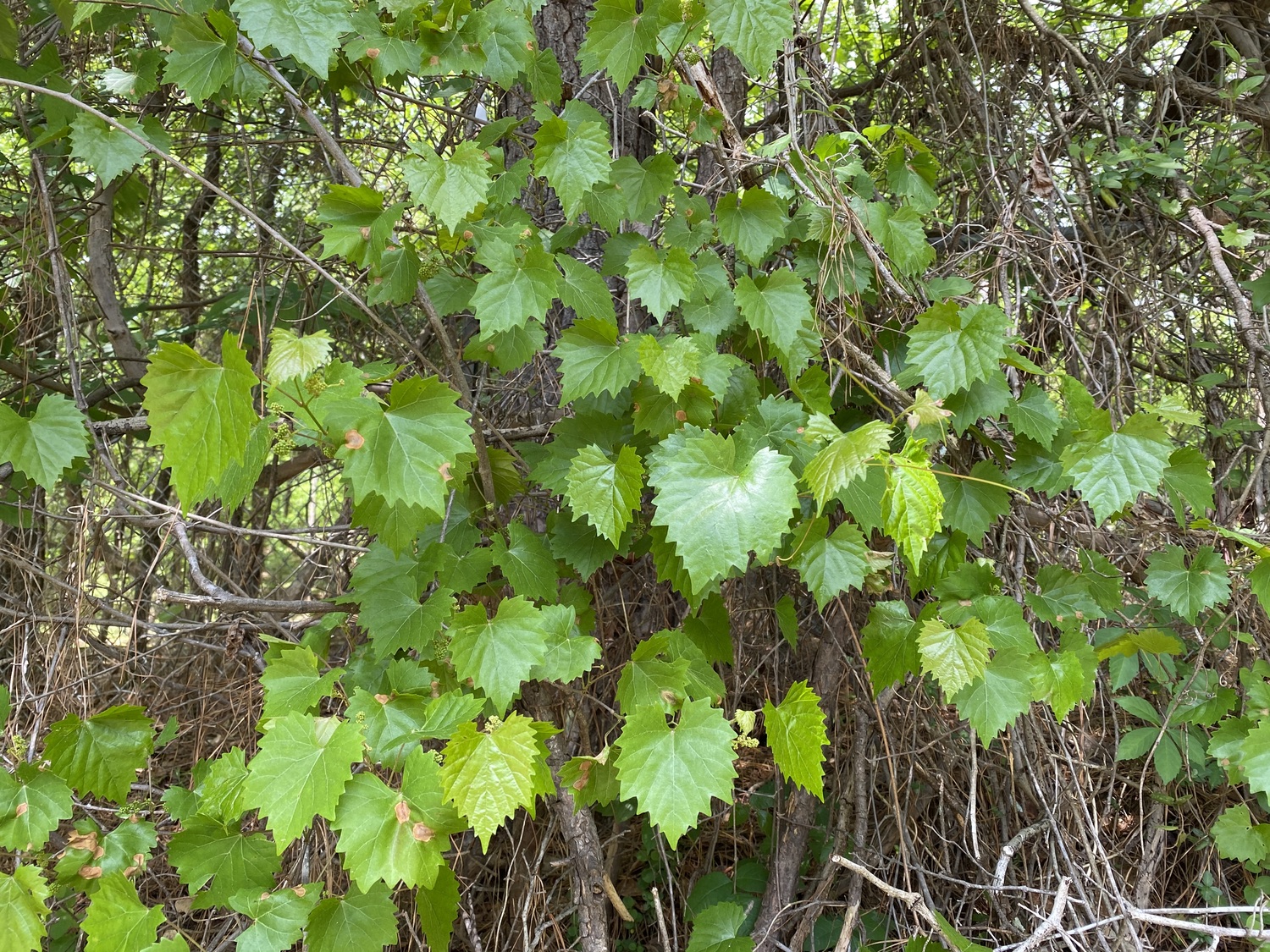
Greenbrier (Smilax spp.). According to the USDA, we have sixteen species of Greenbrier in Georgia, although I do not know how many of these are common or are in the Piedmont specifically. Flora of North America (efloras.org) has a key to species of Smilax, as does the University of Florida IFAS Extension.
It appears that most of what we have in our yard, especially along the river is the Saw Greenbrier (Smilax bona-nox). The stems have numerous small white scales, and the leaves are highly variable in shape, most commonly somewhat triangular to fiddle-shaped. Some leaves have light green spots, but many do not. Many leaves have small prickles along the margins and some have them along the main vein on the underside of the leaf. Many leaves are bright green but some (new growth?) are almost olive-brown. The young stems are thin and covered with prickles, and the older stems are thick (to almost 1 cm) with green prickles tipped in dark red, brown, to black. The stems have small green tendrils, becoming brown with age, which they use to hold onto other vegetation. Multiple (up to 20) small pale green flowers arise as a cluster.
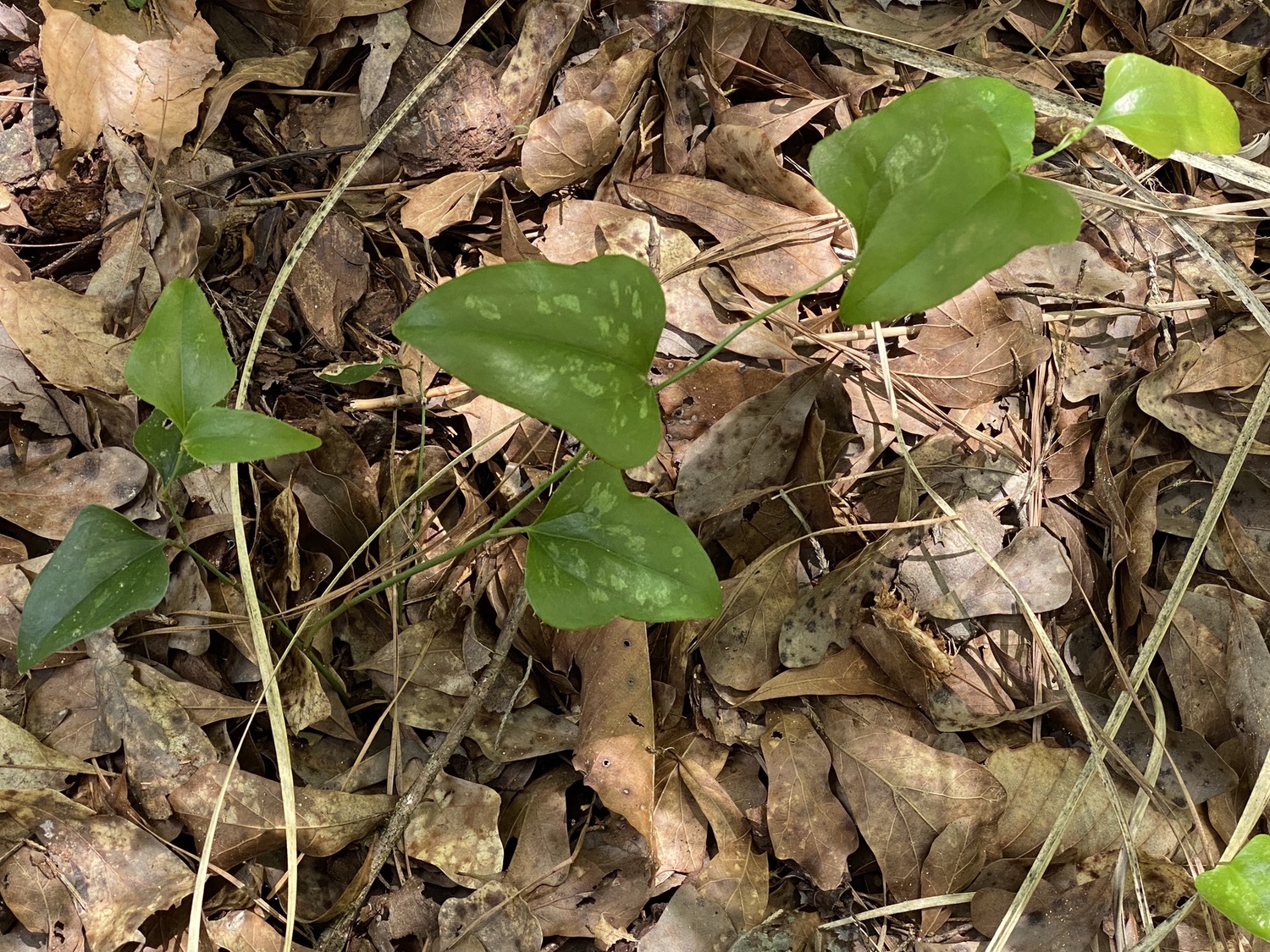
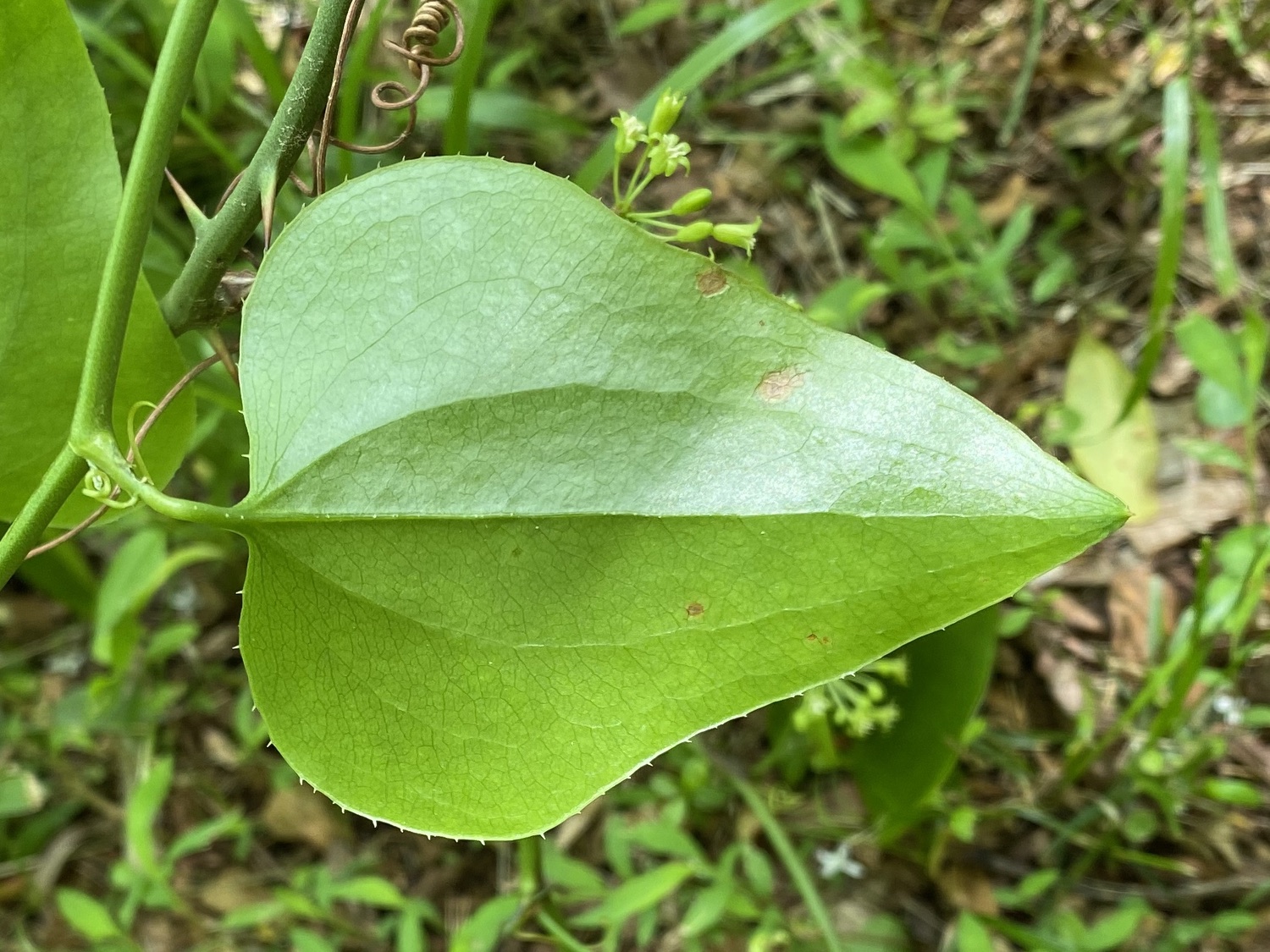
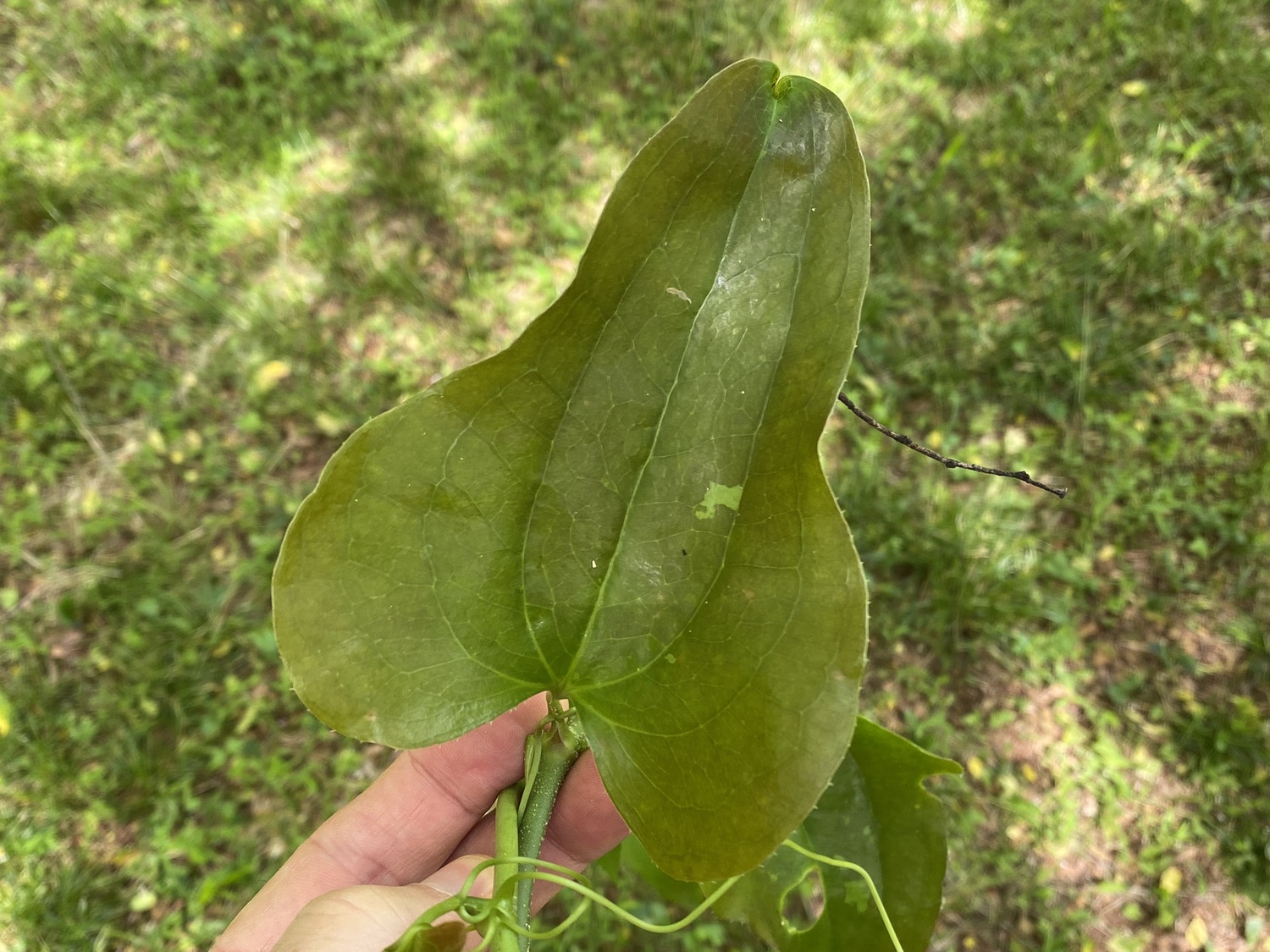
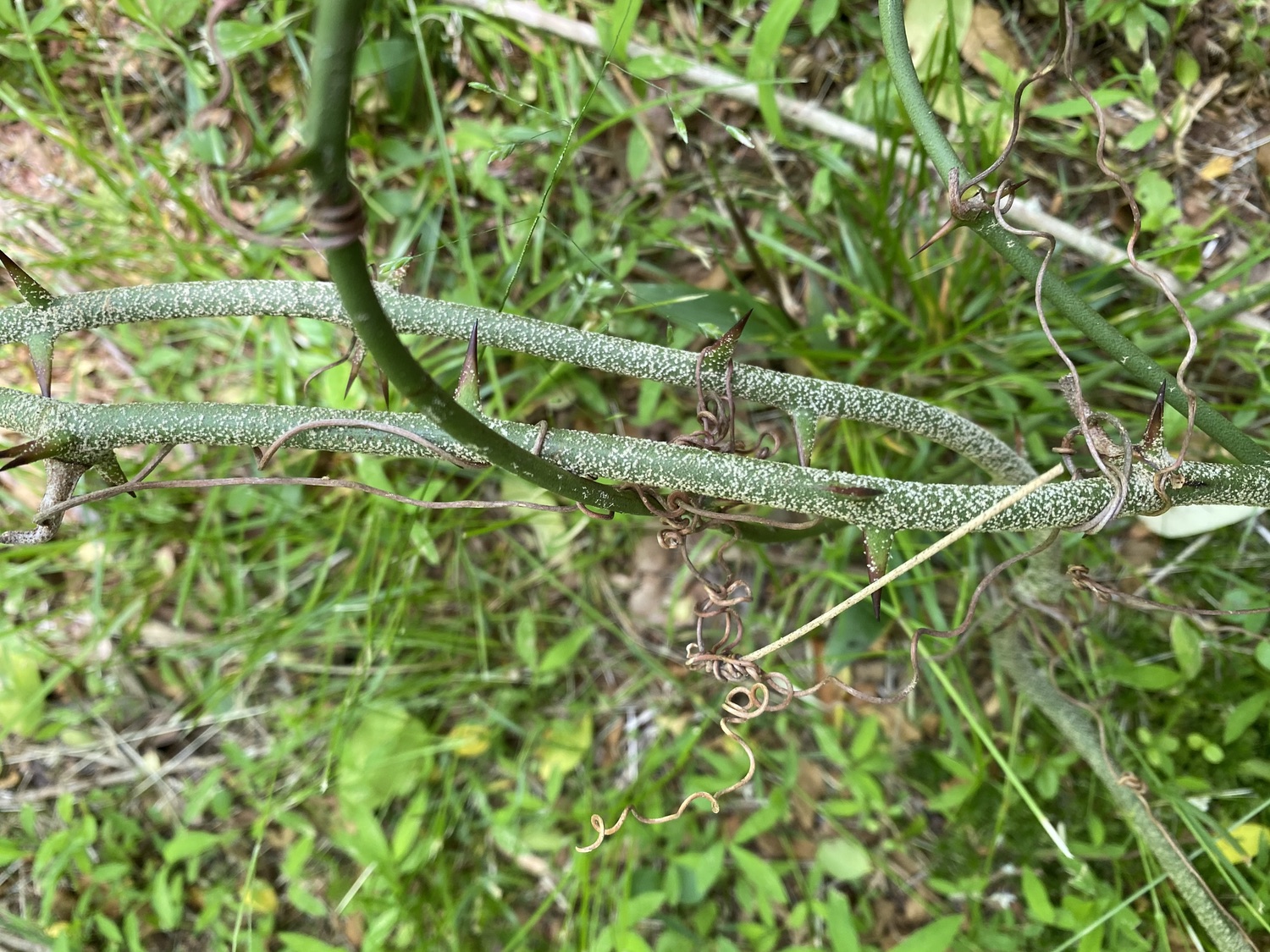
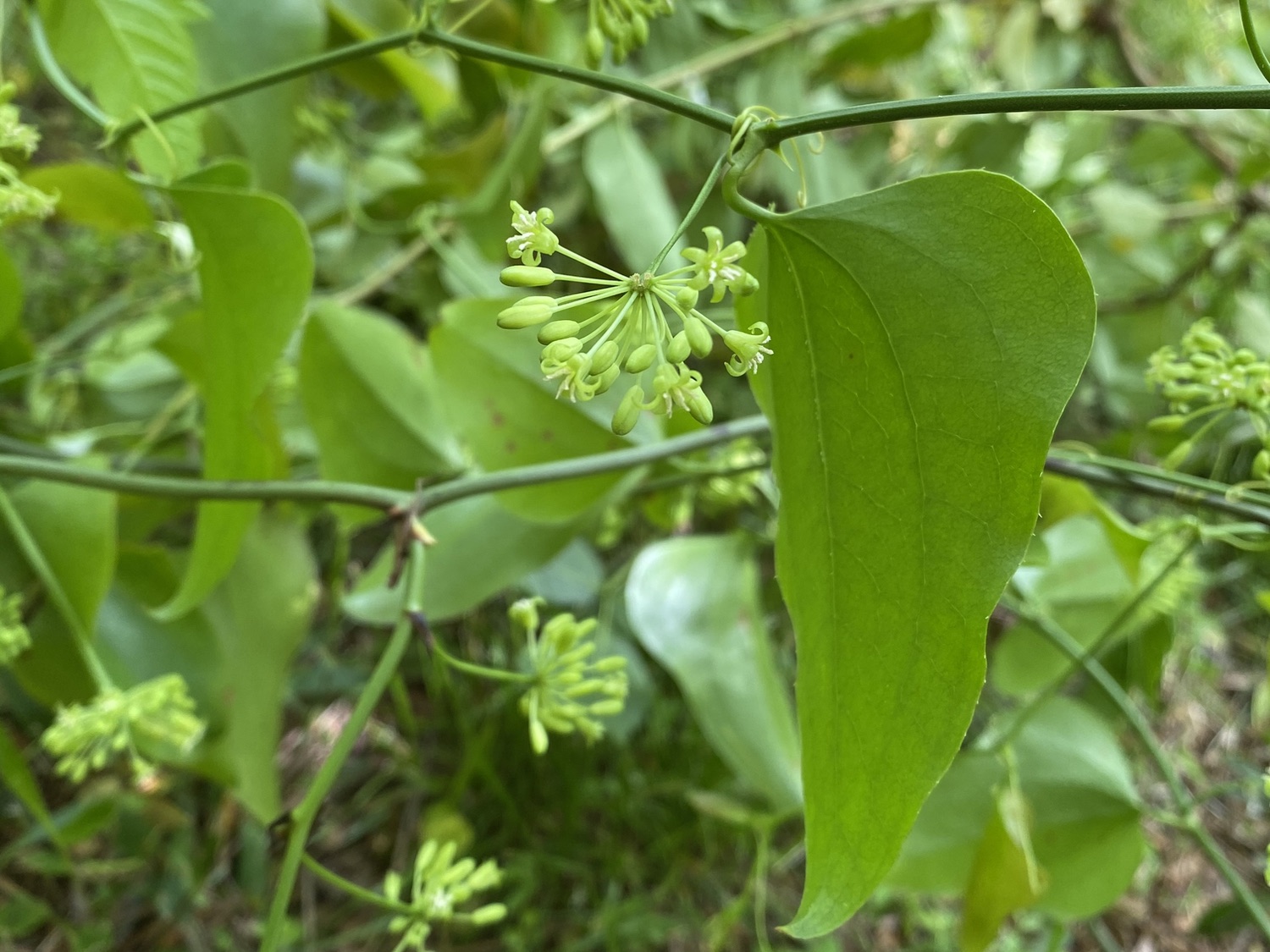
This is a high-climbing species, easily reaching more than 10 m in length. Saw Greenbrier is an apt name, because when I removed so much of this from along the river in 2016, my arms were completely chewed up by the sharp prickles. Completely removing it requires digging up their tubers, which are often baseball-sized, but can grow larger than a basketball. Moreover, you must also dig up the long thick roots they send out laterally. In 50' of river bank, I must have removed several hundred feet of roots!
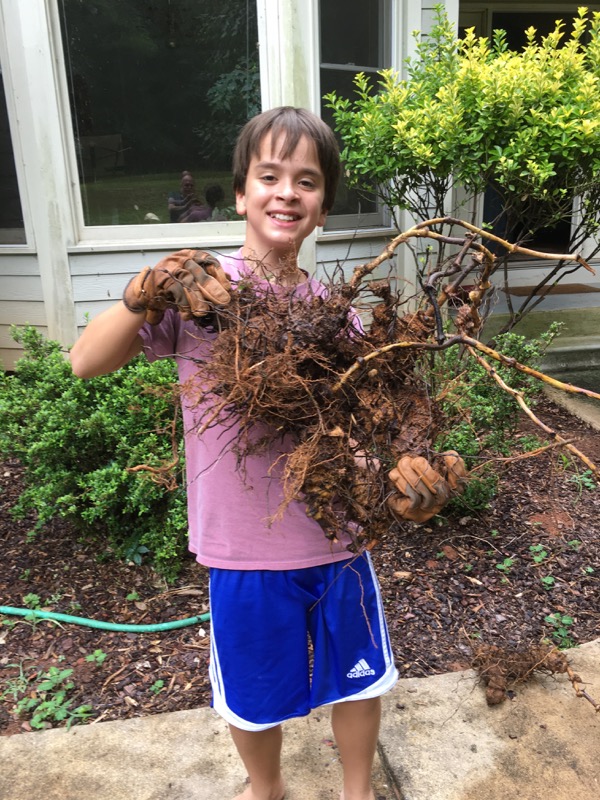
Roundleaf Greenbrier (S. rotundifolia) used to be common in our yard, before I dug up the greenbrier along the river bank. It still grows along our street, and it can be identified by its characteristically large round to heart-shaped leaves.
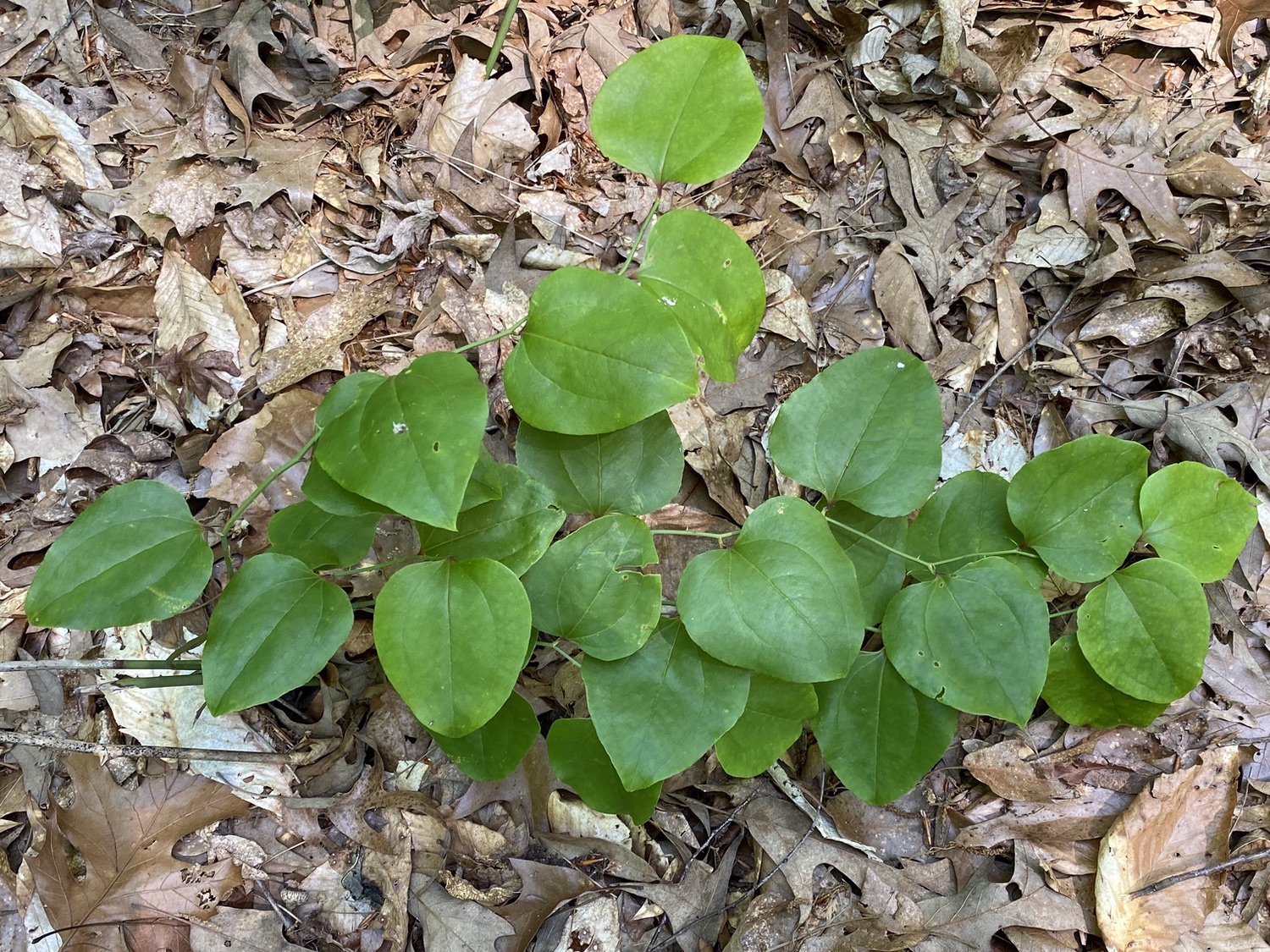
Poison Ivy (Toxicodendron radicans). Everybody learns to recognize this with alternating leaves of three leaflets. The stems are easily recognized, too, because they are quite hairy.
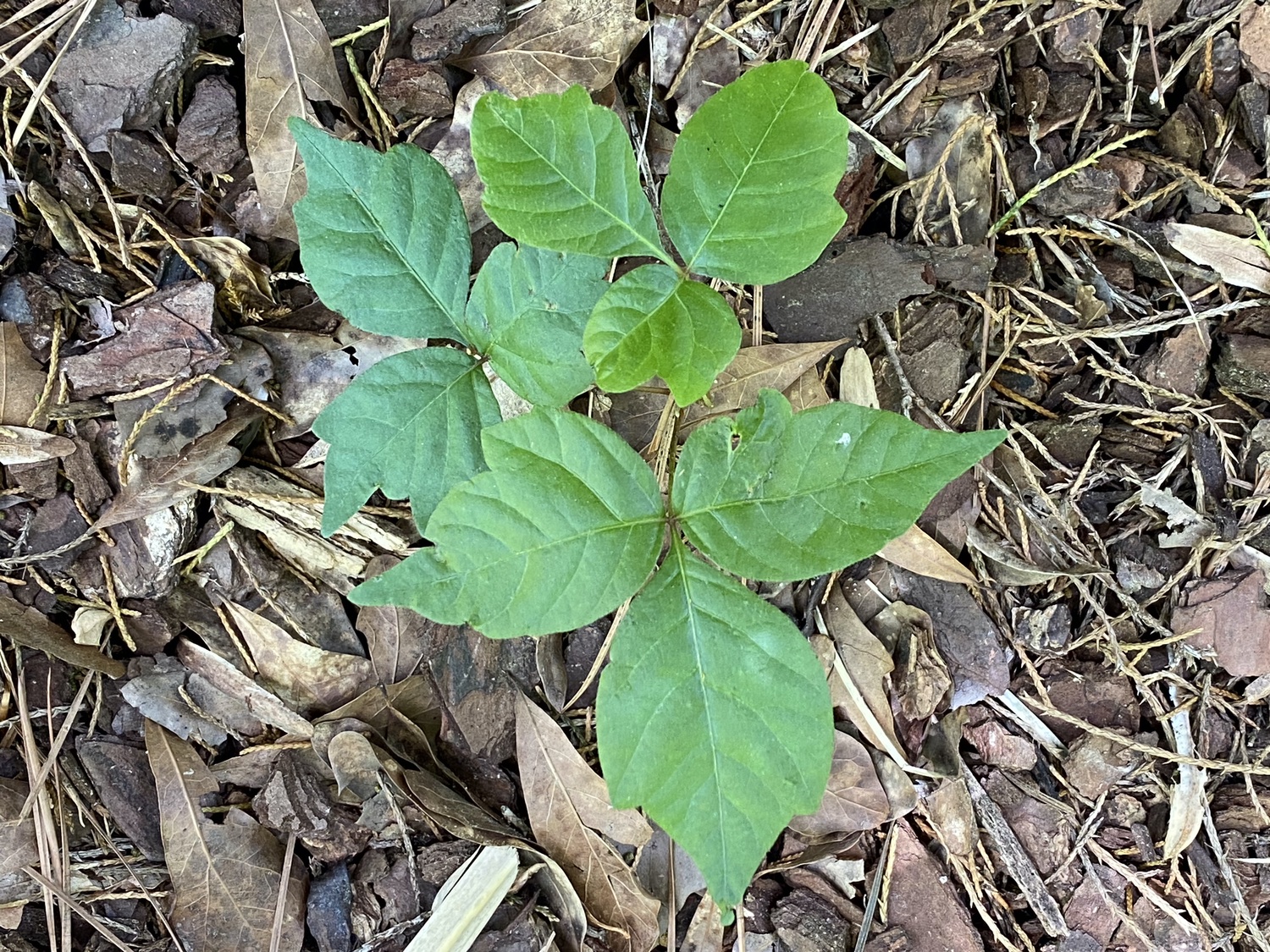
Crossvine (Bignonia capreolata). These are very common along the river, and the blooms tend to face the river, making them obscure from the land. The vines are stout and woody, up to an inch in diameter. Leaves appear along nodes on the vine, with four downward-pointing pointed elliptical leaves per node..
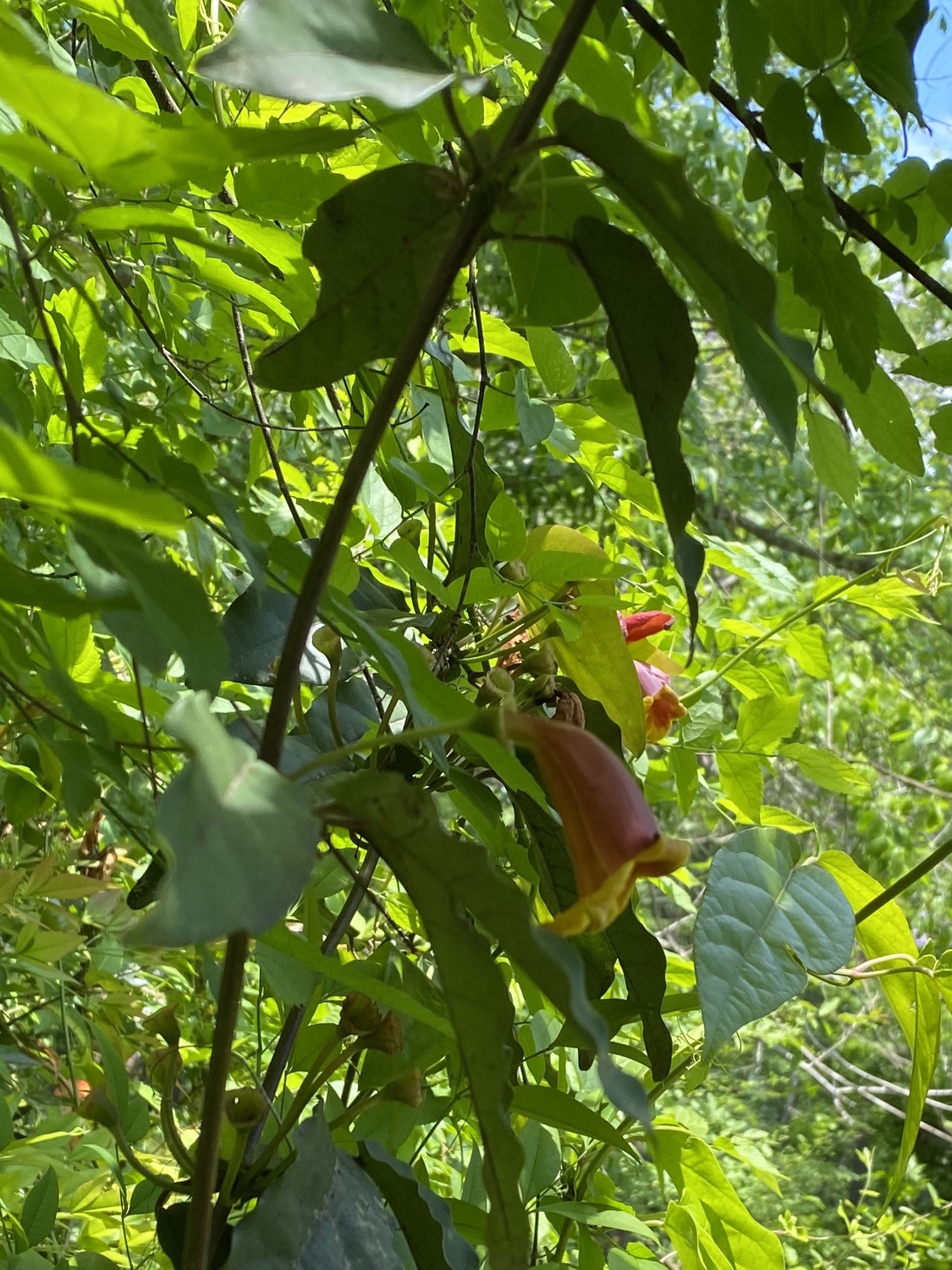
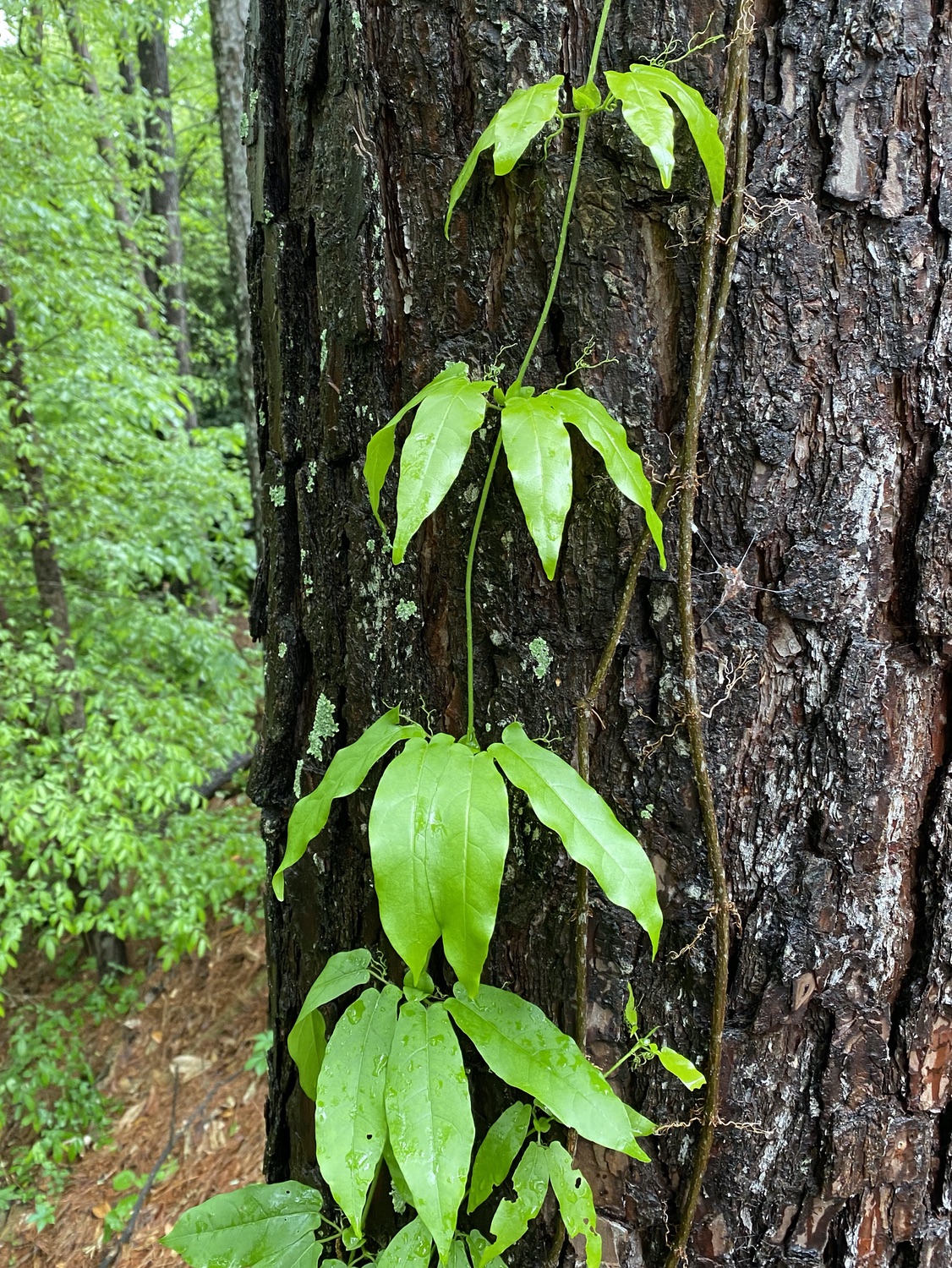
Trumpet Creeper (Campsis radicans). Trumpet Creeper has long compound leaves with many toothed leaflets. The stem is woody. When it blooms, it becomes clear that it is in the same family as Crossvine (Bignoniaceae).
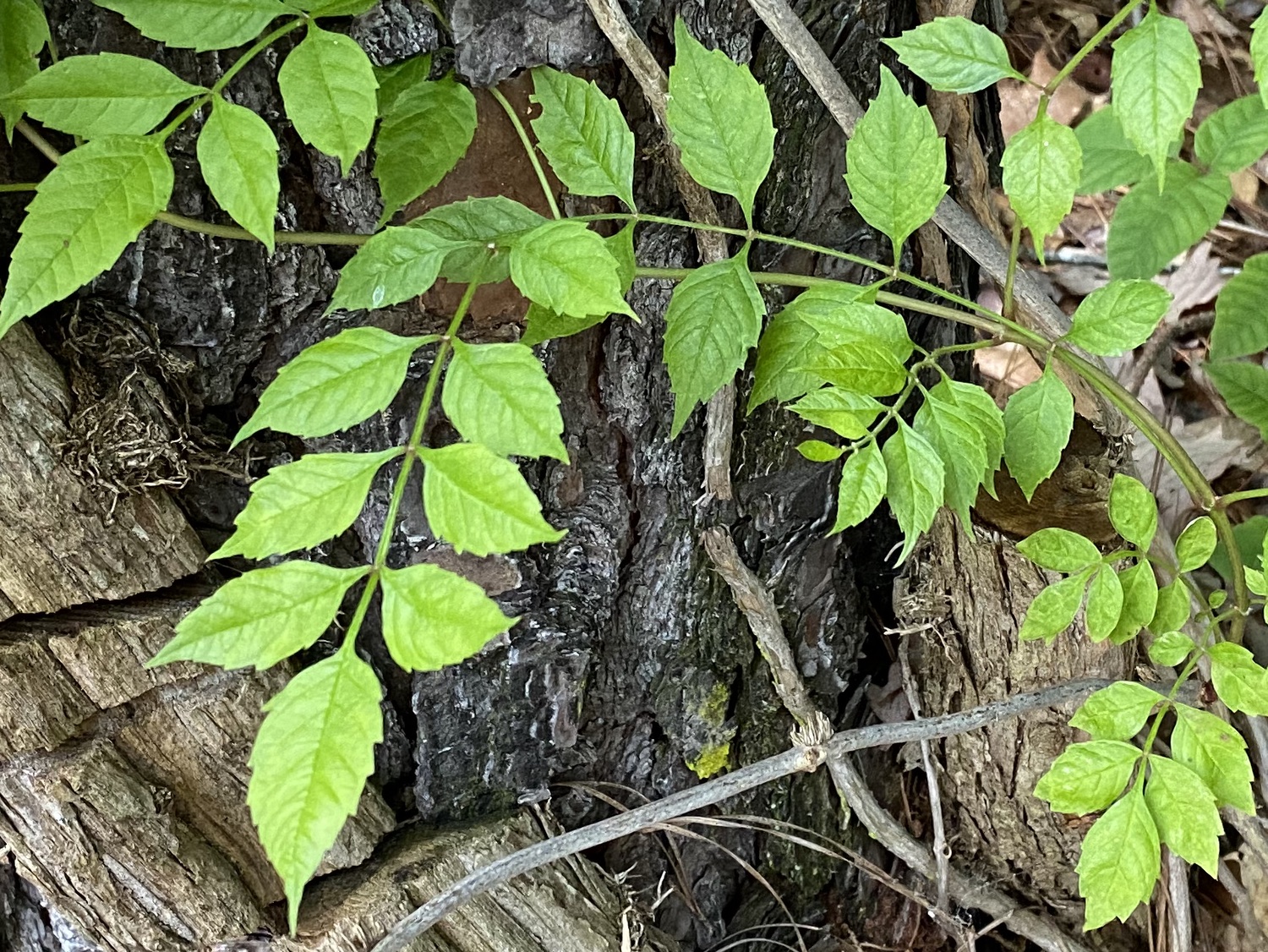
Virginia Creeper (Parthenocissus quinquefolia). These typically have five-toothed leaflets.
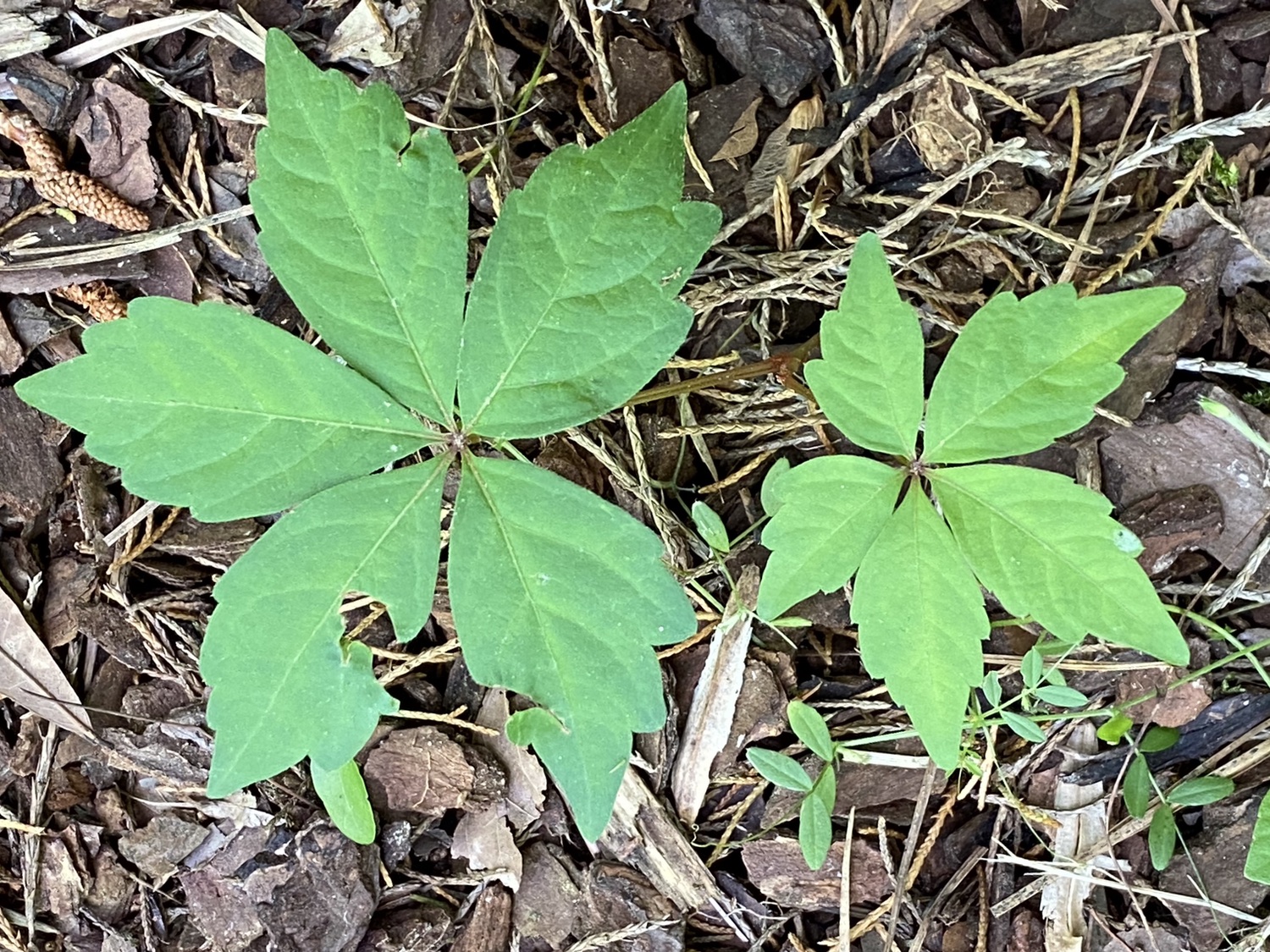
Carolina Milkweed (Matelea carolinensis, also called Carolina Milkvine and Carolina Angelpod). I discovered this one well after all the others, and I’m assuming it is less common. Carolina Milkweed is a twining vine, wrapping around other plants and climbing on them. It has opposite, heart-shaped leaves and it has milky sap.
The Biota of North America Program (BONAP) shows that there are at least 6 species of Matelea in the area, including M. alabamiensis, M. baldwyniana, M. decipiens, M. flavidula, M. floridana, M. obliqua. Several of these are rare or even endangered, and given the abundance of M. caroliniensis, I suspect that is the correct species.
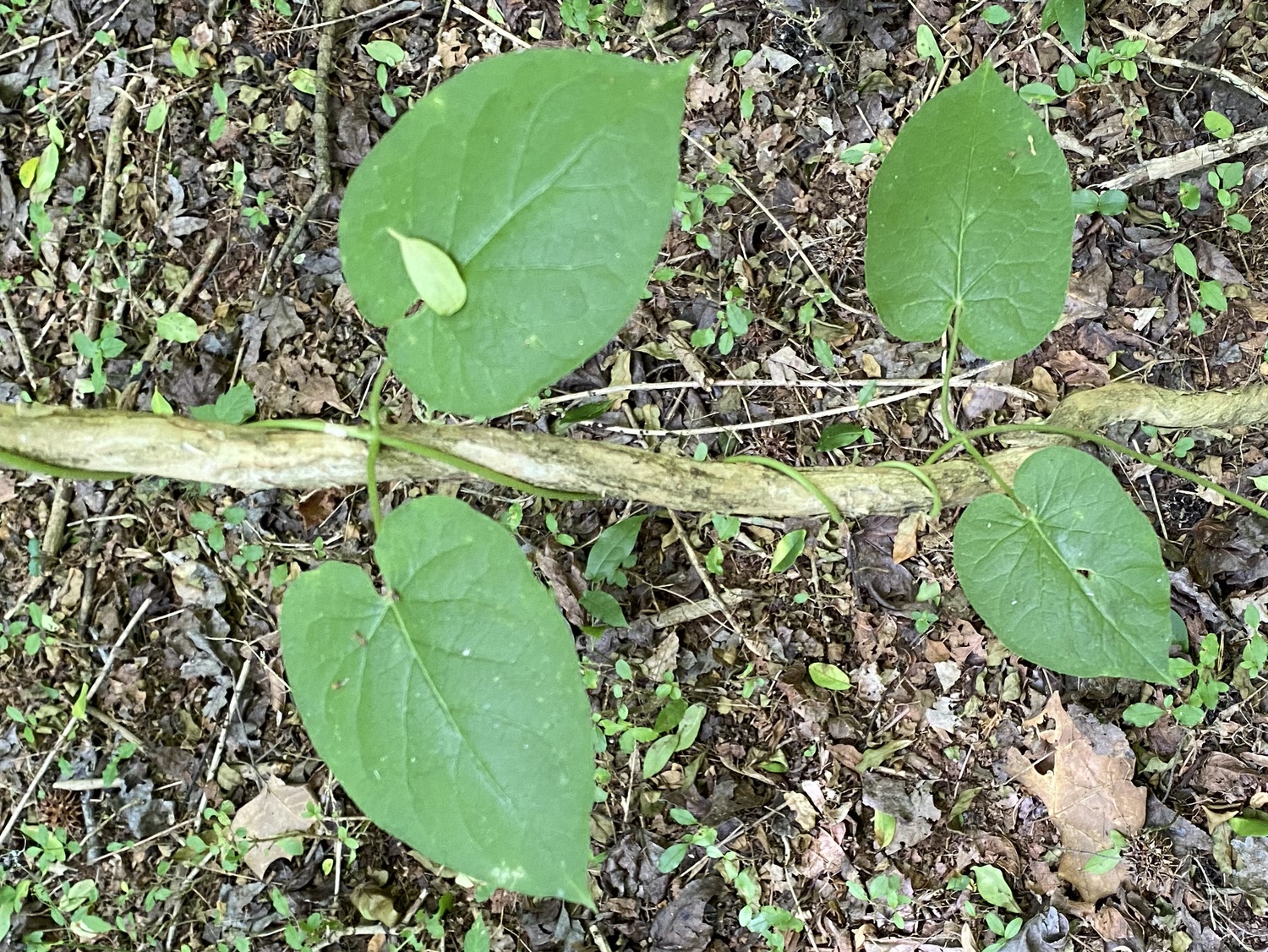
Non-native vines
Kudzu (Pueraria montana). The reviled scourge. It has taken over near the entrance to our neighborhood. The leaves are alternate, with three leaflets 6–20 cm across.

Japanese Honeysuckle (Lonicera japonica). Leaves are opposite, often elliptical, but sometimes high lobate, reminiscent of an oak leaf. The flowers are beautiful and fragrant.
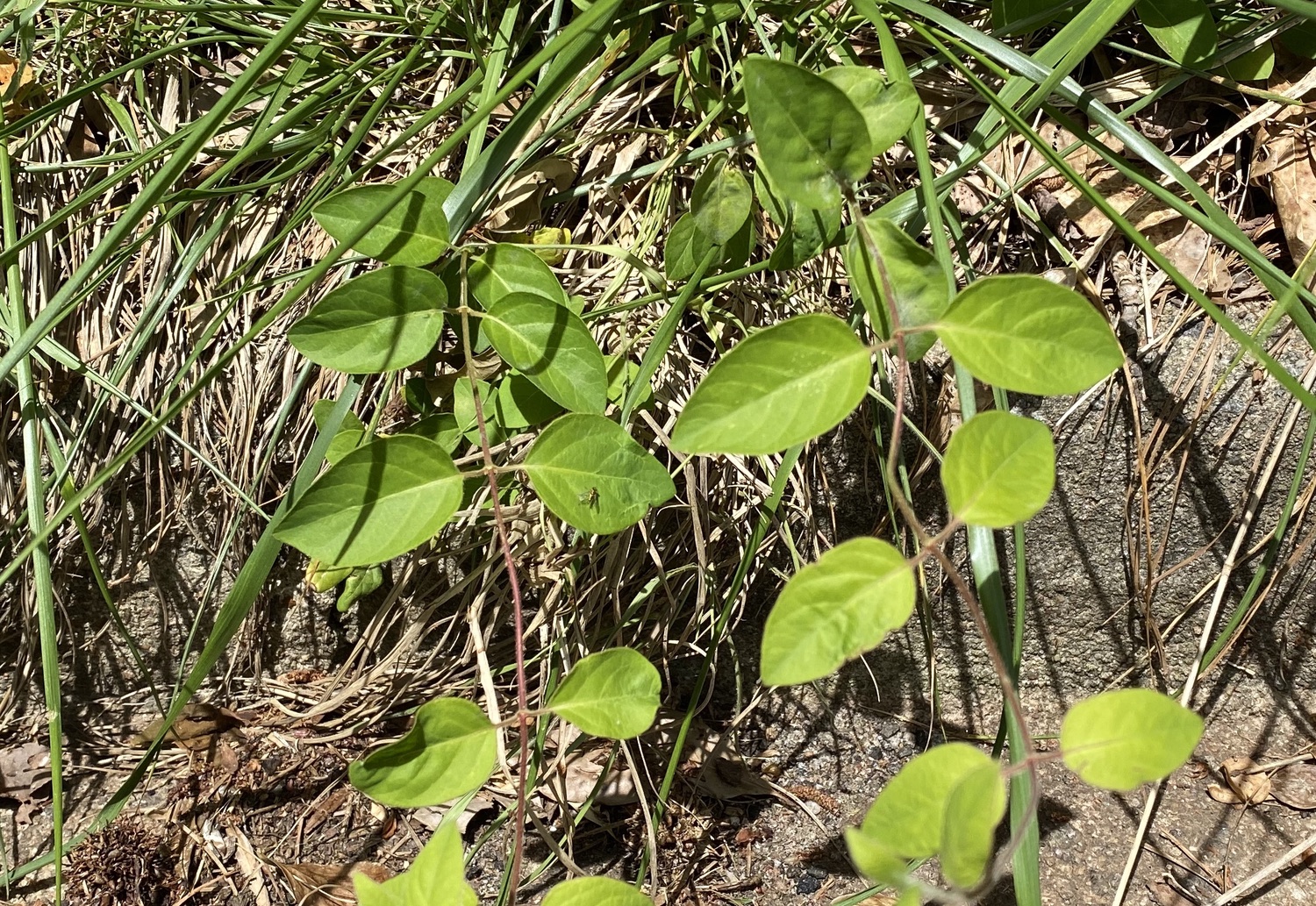
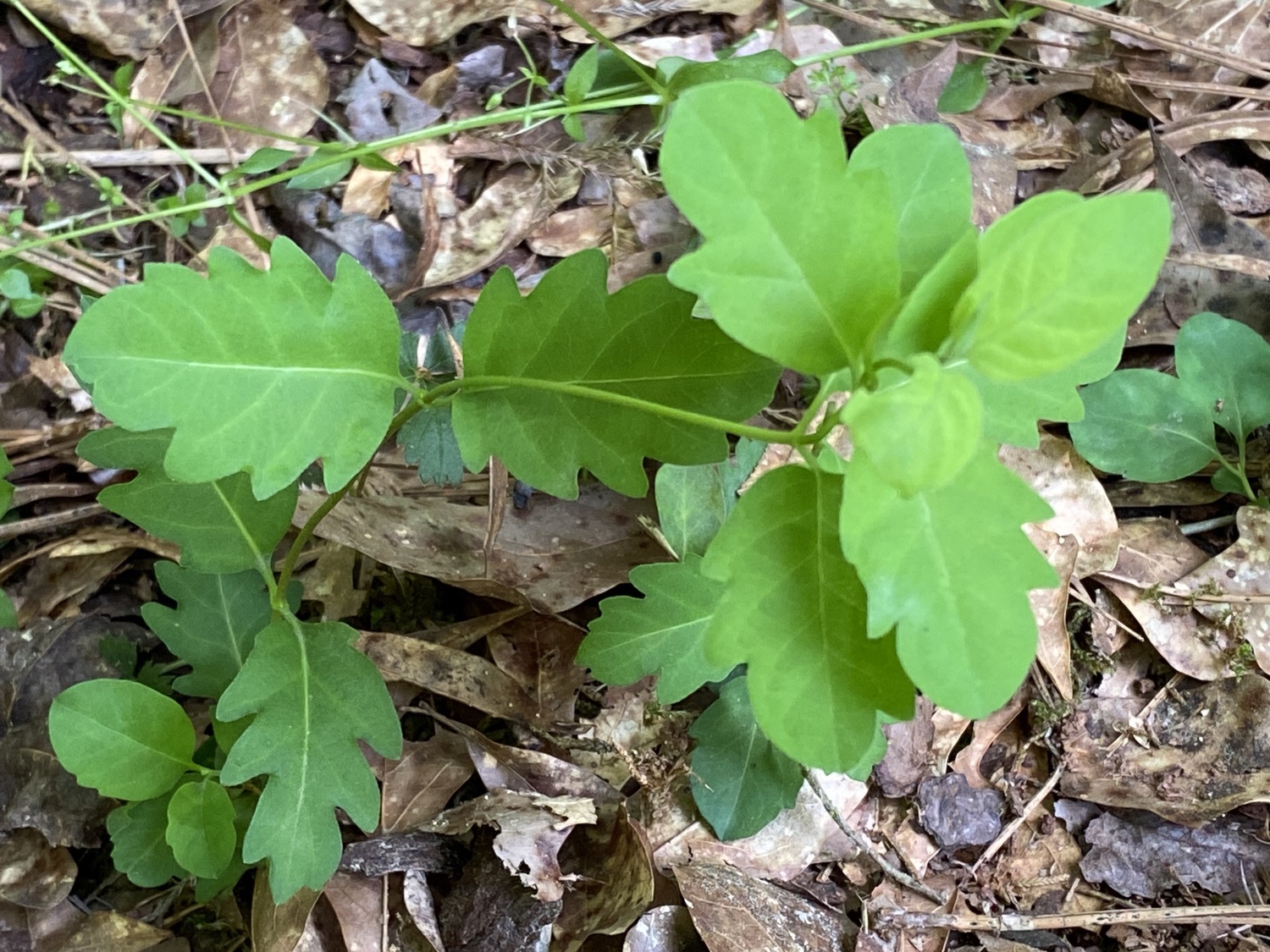
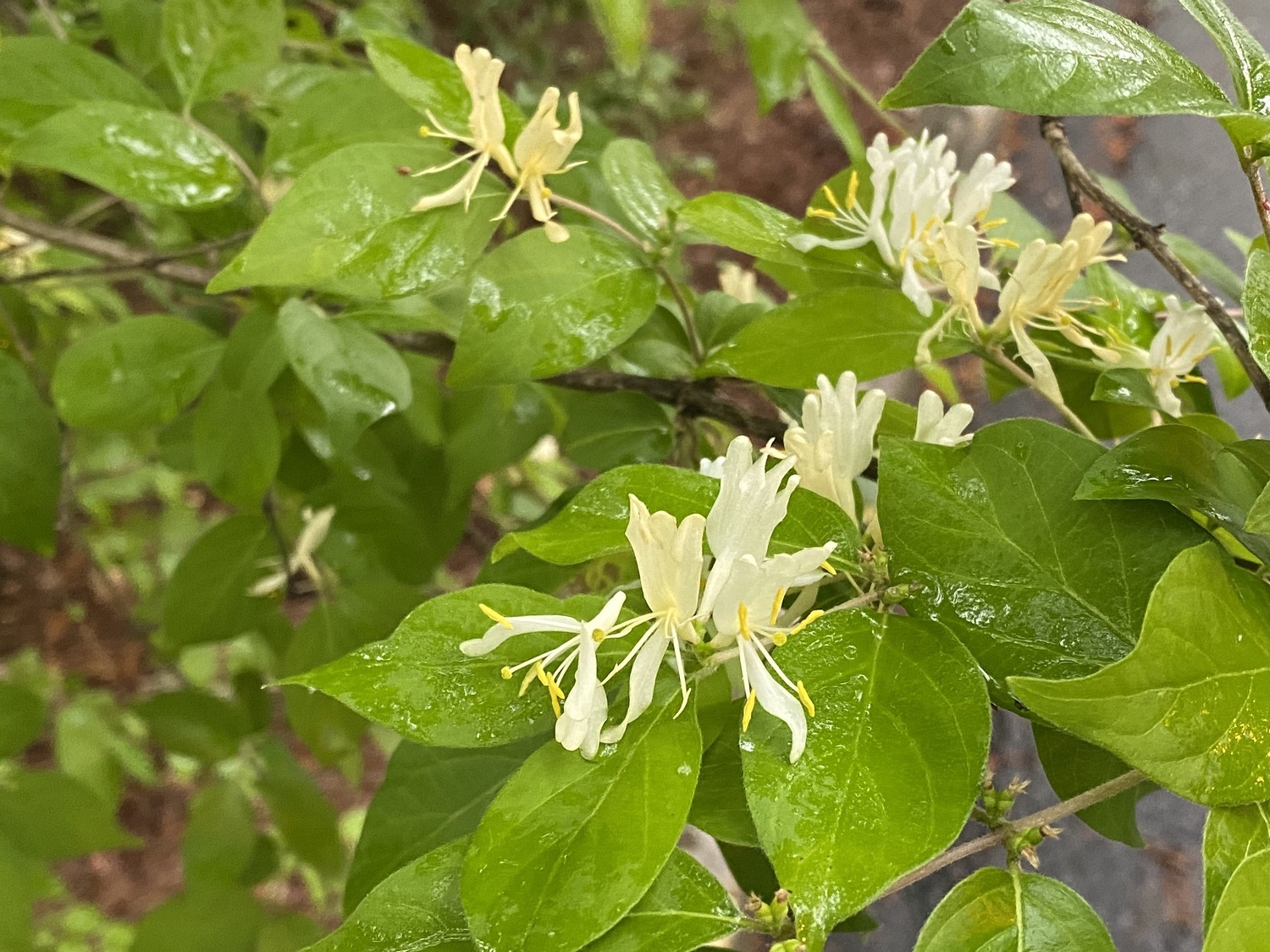
English Ivy (Hedera helix). Widely planted, and then it takes over. The leaves are triangular, sometimes with lobes, and are often glossy, sometimes dark.
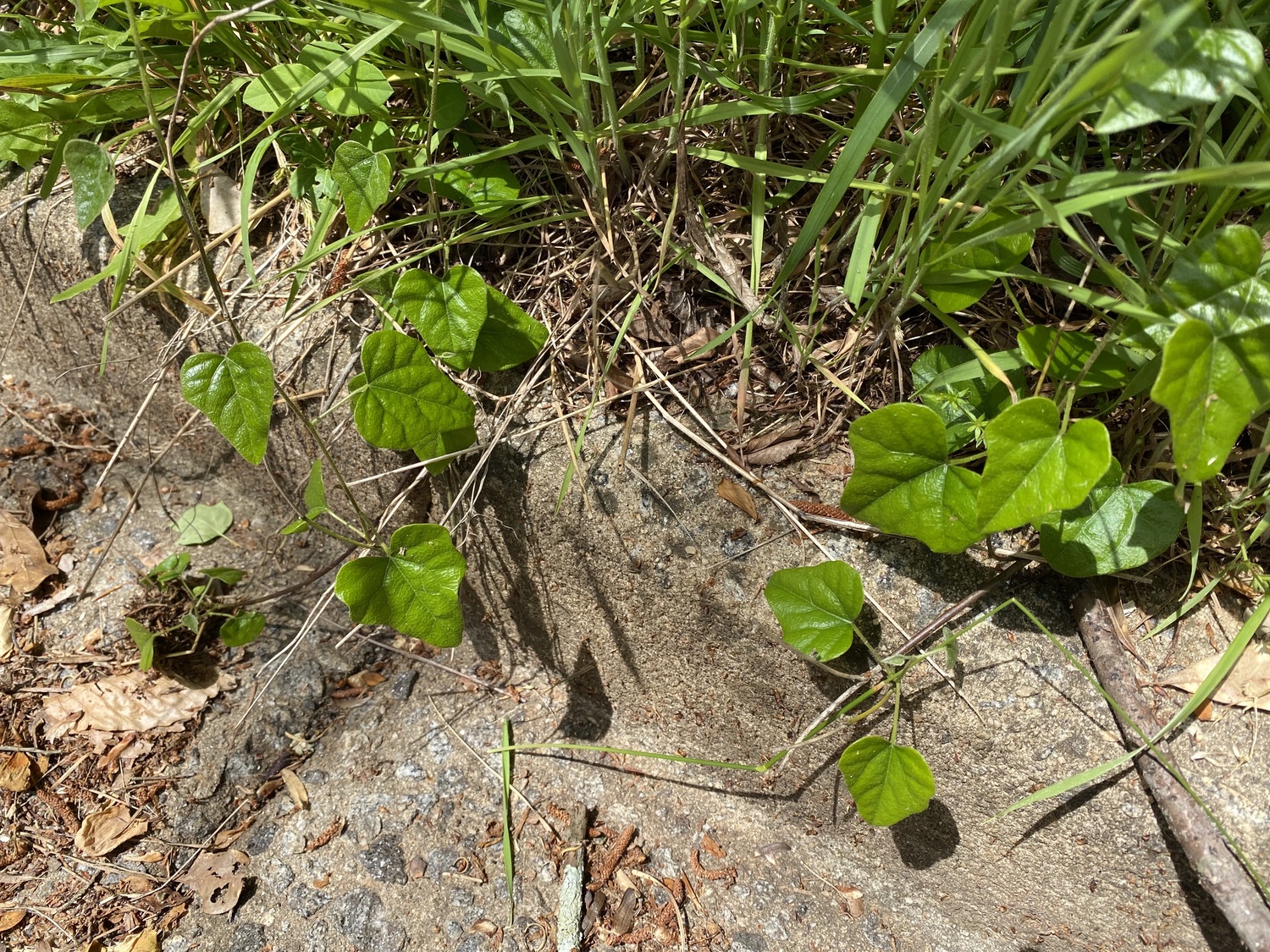
References
Miller, J.H., and K.V. Miller. 2005. Forest Plants of the Southeast and their Wildlife Uses. University of Georgia Press, Athens, Georgia.